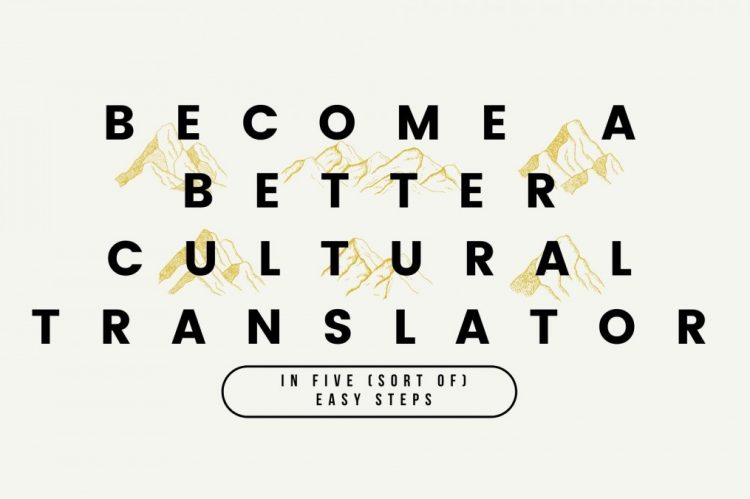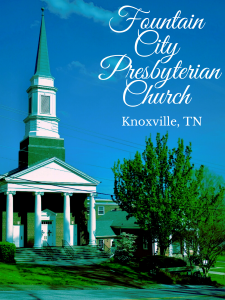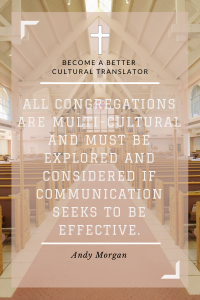You’re Already Are a Cultural Translator, Whether You Realize It Or Not
The preaching moment is an act of cultural translation, and the preacher is a cultural translator, whether they realize it or not. In essence, the preaching moment is the preacher’s faithful attempt at translating their own encounter with God’s Word to the congregation they serve. This blog seeks to help preachers be more thoughtful about the way they communicate as cultural translators for their own congregation by leveraging ethnographic principles.
Preaching Through the Lens of Cultural Translation
Imagine, for a moment, that you had the opportunity to take in the magnificence of the Grand Canyon; you would see the enormity of the rock structures, the depth of the canyon, the grandeur of nature. This encounter might feel holy, set apart, and life-altering.
Now imagine you had to somehow describe that encounter to a group of people.
- What words would you use to describe your experience?
- What images, stories, or communication forms might you leverage to describe the encounter?
To most faithfully and deliberately communicate what you intend, you would need a deep personal well of robust communication methods as well as knowledge of the communication preferences of those who would hear about the experience.
As wonderful, outlandish, and difficult as this sounds, translating a holy encounter with culturally appropriate language is what the act of preaching demands of the preacher each time the sermon is proclaimed. To thoughtfully relay their encounter with God’s Word during the sermon-writing process to the congregation, the preacher needs to be aware of and leverage the culturally-conditioned language and preferences of the hearers to best translate the holy encounter to the assembly.
Becoming a Better Cultural Translator: Doctor of Ministry Project Origins
In my own congregational context, an approximately 400-member neighborhood church in Knoxville, TN, called Fountain City Presbyterian Church I have experienced several instances in which sermons were not heard as I intended or did not engage the congregation as expected. While every preacher delivers a few sermons that miss the mark, these instances of ineffectiveness in communication, in my experience, were likely rooted in my ignorance of culturally specific communication preferences and inability to leverage language that is appropriate to my context.
My doctoral research at Candler has helped to illumine the necessity for exploring and learning the images, words, stories, norms, and form preferences that make up the specific cultural language of my congregational community even though I share many superficial characteristics with my congregation.
Diversity might not be the first thing that would come to mind when one worshipped at Fountain City Presbyterian Church in Knoxville, Tennessee; a church with less than 1% non-white members in 2019 and a majority of the membership above the age of 56. However, below the surface of a superficially homogenous congregation is a slew of complex and interesting cultural identities.
Joseph Jeter and Ronald Allen explain, “The listeners appear to be much the same. But when preachers penetrate below the surface of the congregation, a more complex picture comes into view.”[1] Despite my congregation not appearing racially or ethnically diverse on the surface, my project helped me to learn that all congregations are multi-cultural and must be explored and considered if communication seeks to be effective.
In my own context, I sought to improve my awareness and implementation of the culturally-appropriate language in my congregation in order to preach sermons that the sermonic claim[2] or “point” was easily identifiable and the function statement[3] or intended response of the sermon was more predictable for the purpose of strategic planning.
In your own context, however, sermons that more deliberately consider communication preferences could help achieve a myriad of goal like: more engaging sermons, addressing congregational trauma or conflict, or even strategic leadership goals, just to name a few.
Leveraging Ethnographic Principles to More Thoughtfully Translate Meaning
The Embodied Cultural Lexicon Apparatus is a step-by-step class that invites the preacher and a small group of representative members of the community to assess the effectiveness of a previous sermon, listen to the upcoming preaching text together, describe their experience with the text using communication methods and preferences normative to the community, and finally send the preacher out as an informed representative of the community to exegete, interpret, and ultimately prepare a sermon for proclamation that incorporates the cultural language of the community.
While the COVID-19 pandemic created barriers for implementing my project, I believe that the project would help the preacher to become more aware of the communication preferences and cultural language of a congregation and prepare sermons that better translate the preacher’s encounter with the Word to the congregation. Additionally, I believe the system is portable to any congregational context and has the possibility to help any preacher become a more thoughtful communicator using these abbreviated steps below.
Become a More Informed Cultural Translator in Five (sort of) Easy Steps
Step 0: Assess prior sermon for communication effectiveness with congregation via survey after the preaching moment. [4]
Step 1: Open with Prayer and a Posture to Hear – The class begins with prayer, asking God’s Spirit to illumine the hearts and minds of the participants, allowing them to hear and receive the Word of God in and through their study.
Step 2: Assessment of Prior Sermon – The class portion of the Embodied Cultural Lexicon Apparatus begins in discussing the communication effectiveness results of the congregational survey, highlighting the quantitative data and inviting constructive dialogue. [5]
Step 3: Reading and Hearing the Text – The participants will be invited to take time to write down observations after each movement of the lectio divina process, which will be shared with the larger group in the next step.[6]
Step 4: Dialogue and Listening – Each participant will be invited to share their responses to the following questions:
- What words, images, phrases came to mind as you heard the story?
- How did the passage make you feel?
- How might this text speak to the joys or concerns of our congregation?
- In a few words, what was the passage about to you and for the congregation?
- What, if anything do you feel compelled to do in response to hearing it?
- How might this response better call our congregation together in service, witness, fellowship, or formation?[7]
Step 5: Closing Prayer and Priestly Sending – The program concludes with prayer as well as a charge to the preacher to serve as a priestly listener on behalf of the congregation as they begin their interpretation and they listen for God’s Word revealed. This prayer will delineate the role of preacher as one who encounters the Word and who translates that encounter into a sermon to be proclaimed in the preaching moment.[8]
Works Cited
Jeter, Joseph R., and Ronald J. Allen. One Gospel, Many Ears: Preaching for Different Listeners in the Congregation. St. Louis, MO: Chalice Press, 2002.
Long, Thomas G. The Witness of Preaching. Louisville, KY: Westminster John Knox Press, 2005, 108-109.
McAffee, Dan. “A Guide to the Lectio Divina Prayer Style.” A GUIDE TO THE LECTIO DIVINA PRAYER STYLE. Last modified August 26, 2020. Accessed January 10, 2021. https://www.unleashthegospel.org/2020/07/a-guide-to-the-lectio-divina-prayer-style/.
McMickle, Marvin A. Shaping the Claim—Moving from Text to Sermon. Elements of Preaching. Minneapolis, MN: Fortress Press, 2008, 6.
Notes
[1] Jeter, Joseph R., and Ronald J. Allen. One Gospel, Many Ears: Preaching for Different Listeners in the Congregation. St. Louis, MO: Chalice Press, 2002, 5
[2] Marvin McMickle describes a sermonic claim as, “the essence of what any sermon is about, It is the central truth or teaching of the at sermon. It is a creative and engaging combination of what the biblical text says, how that message is communicated by the preacher.” McMickle, Marvin A. Shaping the Claim—Moving from Text to Sermon. Elements of Preaching. Minneapolis, MN: Fortress Press, 2008, 6.
[3] A “function statement” is defined by Tom Long with, “A function statement is a description of what the preacher hopes the sermon will create or cause to happen for the hearers. Sermons make demands upon the hearers, which is another way of saying that they provoke change in the hearers (even if the change is a deepening of something already present). The function statement names the hoped-for change.” Long, Thomas G. The Witness of Preaching. Louisville, KY: Westminster John Knox Press, 2005, 108-109.
[4] After delivering a sermon, send out a short survey to the congregation to measure the communication effectiveness. My project sought to measure the effectiveness of the sermonic claim and function statement and the survey questions were addressed accordingly.
[5] In order to invite feedback and disarm any trepidation from the participants who might feel uncomfortable offering feedback to the preacher, the preacher will ask the following questions with regards to the results of the congregational survey: 1) In what way/s do you agree with these results? 2)In what way/s do you disagree with these results? 3) What could have changed in the sermon to increase the favorability in the survey results? 4) What could have changed or been adapted in the sermon to decrease the survey results?
[6] Dan McAfee describes the Lectio Divina process with, “The traditional practice of Lectio Divina has 4 parts: Lectio (read), Meditatio (meditate), Oratio (pray) and Contemplatio (contemplate). As the scripture text is read multiple times, it allows us to go deeper and deeper into the text. To pray Lectio Divina, you will need a copy of Scripture. A pen and a notebook are also helpful to write down your thoughts, reflections and prayers. Find a place that is free from distractions. This prayer usually takes about half an hour. Begin by quieting yourself and becoming aware of your breathing. Let go of the concerns of the day and invite the Holy Spirit to guide your reflection. McAfee, A Guide to the Lectio Divina Prayer Style.
[7] After the reading and hearing of the text, the participants will be asked to share their findings. This process of assessing, refining questions, and seeking clarification based upon participant feedback and leader input in the semi-structured interview format is called probing and will help the preacher better explore the “meaning behind the meaning” of participant responses.
[8] This prayer asks God’s guidance as for the priestly task of listening for the Word and translating as an embodied cultural lexicon on behalf of the community with the knowledge that, while each joy, concern, norm illumined, form preferred, or perspective lifted may not be addressed in the sermon, the participants have prepared the preacher for the preaching moment to communicate in the cultural language of the congregation.




